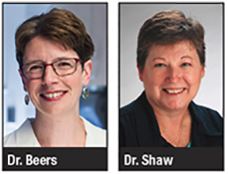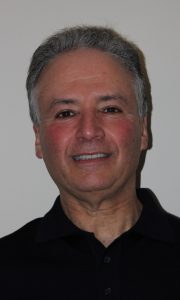Dear NYS AAP – Chapter 2 Member,
There is a lot going on in Pediatrics in New York State, around the world, and in the Chapter. This month’s newsletter highlights issues and events that should be of interest to you. We especially need your help and attention in dealing with the measles epidemic and in helping to pass our legislative priorities in Albany. One of our legislative goals is to end all vaccine exemptions except for legitimate medical reasons. Three other states have already accomplished this, and NY can as well, with your advocacy. Please read on, advocate, and join us for our upcoming events.
Steven J. Goldstein, MD, FAAP
President, NYS AAP – Chapter 2
SJG34@Cornell.edu
Measles Grows in Brooklyn
The number of measles cases in Brooklyn has increased dramatically in the past few weeks and some of us have been dealing with this in our offices, clinics, and ED’s. Chapter 2 has been in contact with the NYC DOH and a link to their measles page is posted on the Chapter’s home page.
An MMR vaccine should be given at 6 months of age in affected communities to offer early protection, but does not count towards the doses needed for school attendance. Any child with one MMR given on or after their first birthday may get a second dose 28 or more days later. This second dose will complete the series and is to capture the 3-5% of children who did not develop immunity with their first injection. I personally have seen measles in the office in the past weeks and the problem is compounded by not knowing who is in the 4-5 days pre-rash phase but nevertheless spreading disease in the office. The city has guidelines posted for post-exposure prophylaxis and the DOH will pick up swabs and blood for testing. Recommendations are to close the office/exam rooms for 2 hours after someone with measles has visited. We now prescreen our visits so that anyone with fever and rash is met outside the office so as not to expose others. There is a lot to say about this issue. For those of you in other communities, keep your eyes open. There were 2 cases in Queens last week.
Here are some good resources for dealing with the anti-vax/hesitancy issue and measles:
- The True Cost of Measles Outbreaks During the Postelimination Era JAMA 3/19
- Identifying and Addressing Vaccine Hesitancy
- ‘Monkey, Rat and Pig DNA’: How Misinformation Is Driving the Measles Outbreak Among Ultra-Orthodox Jews
Pending Vaccine Legislation in New York State Worthy of Your Support
The bills listed below are a priority for us and we may have more influence in view of the measles issue. The newly elected legislature is sympathetic to pediatric issues, so please express your opinion to your representatives by phone, letter, email, or even better, in person at their local office. Click the links below to view the NYS AAP’s Memo of Support for each one:
- Medical Exemption to Vaccination (A.02371/S.02994)
- Requiring Flu Vaccine in Infant & Child Care (A.02316/S.02276)
- Allow Minors Over 14 to Consent to Immunization (A.6564/S.4244)
Free CME Dinner Program – May 9th
“What Happens in Childhood Does Not Stay in Childhood: Why this is true and what we should do!
EVENT: “What Happens in Childhood Does Not Stay in Childhood: Why this is true and what we should do!”
PRESENTED BY: NYS AAP – Chapter 2
WHEN: May 9, 2019 from 6:30pm – 9:00pm
WHERE: NYU Winthrop Hospital | 101 Mineola Blvd. | Research and Academic Center, Conference Room G-18, Section A | Mineola, NY 11501
OVERVIEW:
At this CME dinner program for Chapter members, Dr. Andy Garner, co-author of “Thinking Developmentally: Nurturing Wellness in Childhood to Promote Lifelong Health,” will discuss the lifelong effects of childhood adversity/toxic stress and give pediatricians an evidence-based road map for building a healthier future for the next generation.
$10 Refundable Fee: NYS AAP – Chapter 2 or 3 Members (this fee will be refunded to Chapter members who attend)
$40: Non Member Pediatricians (this fee can be applied to Chapter dues)
AGENDA:
6:30pm Reception/Exhibit Hour
7:30pm Welcome and Introductions
Steven J. Goldstein, MD, FAAP
President, NYS AAP – Chapter 2
7:35pm What Happens in Childhood Does Not Stay in Childhood: Why this is true and what we should do!
Andrew Garner, MD, PhD, FAAP
Clinical Professor of Pediatrics
CWRU School of Medicine
Cleveland, OH
Objectives:
- Explain the significance of recent advances in the basic sciences of development (e.g., epigenetics, developmental neuroscience)
- Describe the ecobiodevelopmental model of disease and wellness, some of its advantages, and a few of the implications for medicine
- Define relational health and at least three components of a public health approach to build relational health
8:30pm Questions & Answers with Panelists
Moderator: Steven J. Goldstein, MD, FAAP
President, NYS AAP – Chapter 2
Ellen J. Feldman, LCSW-R, CCTP
Supervisor of Education and Training
Child Abuse Prevention Services (CAPS)
Roslyn, NY
Andrew Garner, MD, PhD, FAAP
Clinical Professor of Pediatrics
CWRU School of Medicine
Cleveland, OH
Joaniko Kohchi, MPhil, LCSW, IMH-E® (IV-C)
Director, Institute for Parenting
Adelphi University
Garden City, NY
Jack M. Levine, MD, FAAP
Executive Committee, AAP Section on Developmental and Behavioral Pediatrics
Chair, NYS AAP – Chapter 2 Committee on Developmental-Behavioral Pediatrics/Children with Disabilities
Sandra Pensak, MA
Adjunct Lecturer and Field Supervisor
Queens College, CUNY
Flushing, NY
9:00pm Adjourn
ACCREDITATION STATEMENT:
This activity has been planned and implemented in accordance with the Accreditation Requirements and Policies of the Medical Society of the State of New York (MSSNY) through the joint providership of the Westchester Academy of Medicine and the NYS American Academy of Pediatrics Chapter 2. The Westchester Academy of Medicine is accredited by MSSNY to provide Continuing Medical Education for physicians.
The Westchester Academy of Medicine designates this live activity for a maximum of 1.5 AMA PRA Category I Credits™. Physicians should claim only the credit commensurate with the extent of their participation in the activity.
FOR MORE INFORMATION:
Contact Jessica Geslani, Executive Director, at jgeslani@aap.org or 516-326-0310
Are You an Early Career Physician Looking for a Mentor?
We are excited to announce the launch of our Early Career Physician Mentoring project. We will be pairing our Early Career Physicians (<10 years out of training) with seasoned pediatricians in our area. We have amazing mentors including AAP local and national leadership who are ready to be paired with YOU for one on one mentoring!
Sign up online to be a Mentee. Any questions? Contact: Dr. David Fagan, Chapter 2’s Mentoring Committee Chair, at dfagan@northwell.edu, or our Executive Director, Jessica Geslani, at jgeslani@aap.org.
The 2020 Census
As the Census approaches, please keep in mind that counting every child is important. More about this issue will be coming from the National AAP.
The Casey Foundation’s 2018 KIDS COUNT® Data Book warns that the 2020 census is mired in challenges that could shortchange the official census count by at least 1 million kids younger than age 5. This discrepancy would put hundreds of millions of federal dollars at risk and, in doing so, underfund programs that are critical for family stability and opportunity.
To help spread the word, Nassau and Suffolk County high school students can participate in the Health & Welfare Council of Long Island’s 2020 Census Logo Design Contest. Entries are due by May 15th.
Wellness Radio Show
Tune into a VoiceAmerica.com radio show on wellness topics by Dr. Vidisha Patel, daughter of our Wellness Committee Co-Chair, Dr. Ishvar Patel.
RESOURCE: New York State Medicaid Managed Care (MMC) Pharmacy Benefit Information Center.
Having trouble figuring out which ADHD drug or inhaled steroid is covered for your patient?
The New York State Medicaid Managed Care (MMC) Pharmacy Benefit Information Center is a website that is designed to provide easy access for members and providers looking for information on the drugs and supplies covered by different Medicaid health care plans. While pharmacy benefits and participating pharmacies vary among health plans, all plans maintain their own web sites and customer service call centers.
Visit the website here: https://mmcdruginformation.nysdoh.suny.edu/
Chapter 2 Committee Openings
Our Committees are actively seeking your involvement and ideas! There are openings and opportunities to make a difference in the following committees:
- Disaster Preparedness
- Environmental Health
- Legislative
- Membership and Diversity
- Mentoring Committee (Mentors and Mentees wanted)
- Parents (suggest a parent to work with us)
- Pediatric Council
- Prevention of Family Violence
- Quality Improvement
View our full list of committees and contact information here. Still don’t see your interest? Talk to us about starting a new committee!
NATIONAL AAP NEWS – Presidential Elect Candidates

The National AAP National Nominating Committee has selected Dr. Lee Savio Beers of Washington, D.C., and Dr. Pamela K. Shaw of Kansas City, Kan., as candidates for AAP president-elect.
Additional information about the candidates, including profiles and position statements, will be published in upcoming issues of AAP News and online at www.aap.org/election. Voting will begin September 7 and ends September 21, 2019.
We’ll help you pursue your passion within Pediatrics!
Send us an email describing your interest and we will connect you with the right people to get you involved.
Please contact me or our Executive Director, Jessica Geslani, at jgeslani@aap.org
Follow Chapter 2 on Twitter: @NYSAAPCh2
My best,
Steve Goldstein, Chapter President SJG34@Cornell.edu | Twitter: @SteveGoldstei10
and the Officers:
Shetal Shah, Vice President shetaldoc@hotmail.com | Twitter @NICUBatman
Robert Lee, Secretary rlee@aap.net
Sanjivan Patel, Treasurer sapatel@wyckoffhospital.org



